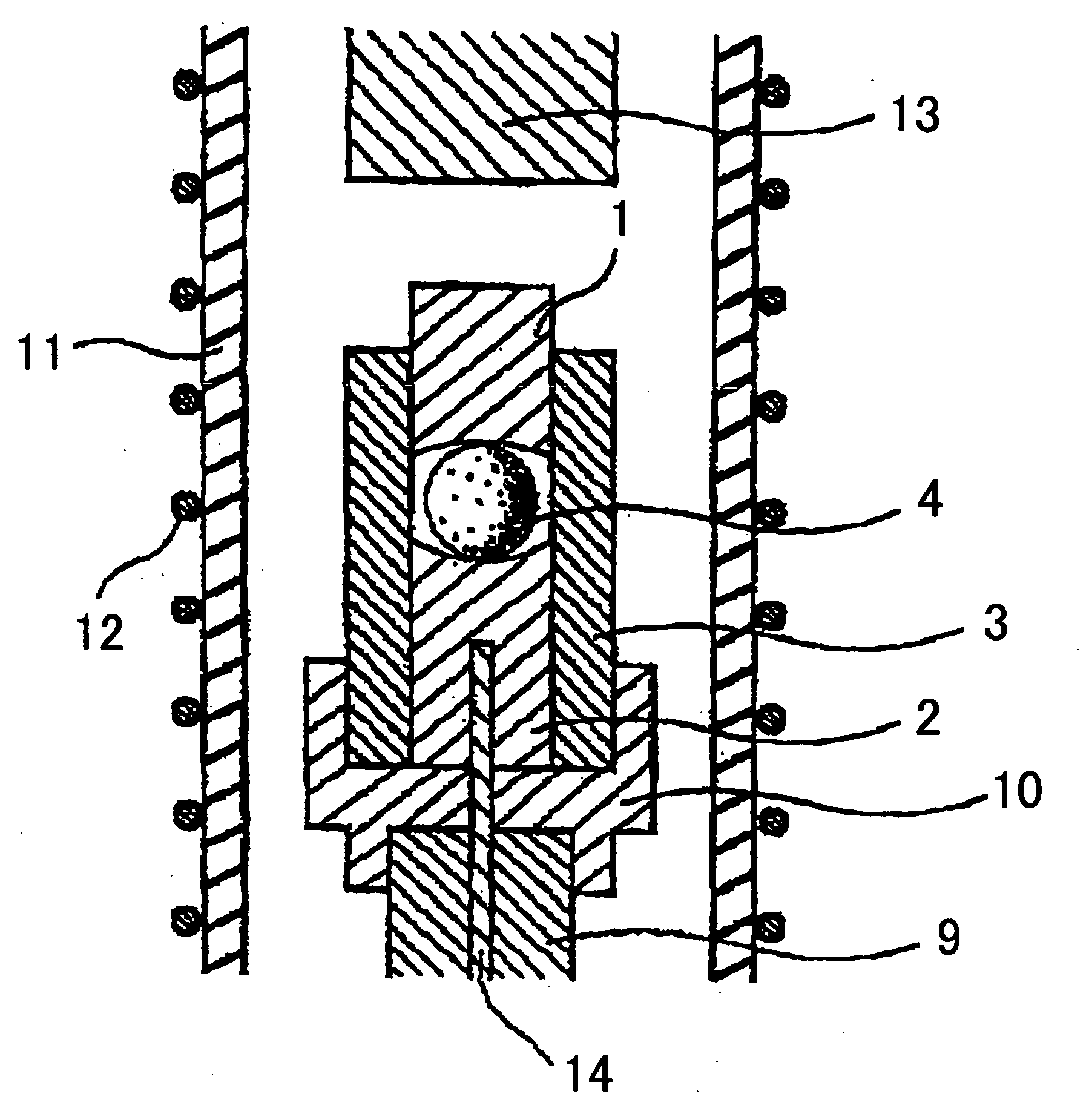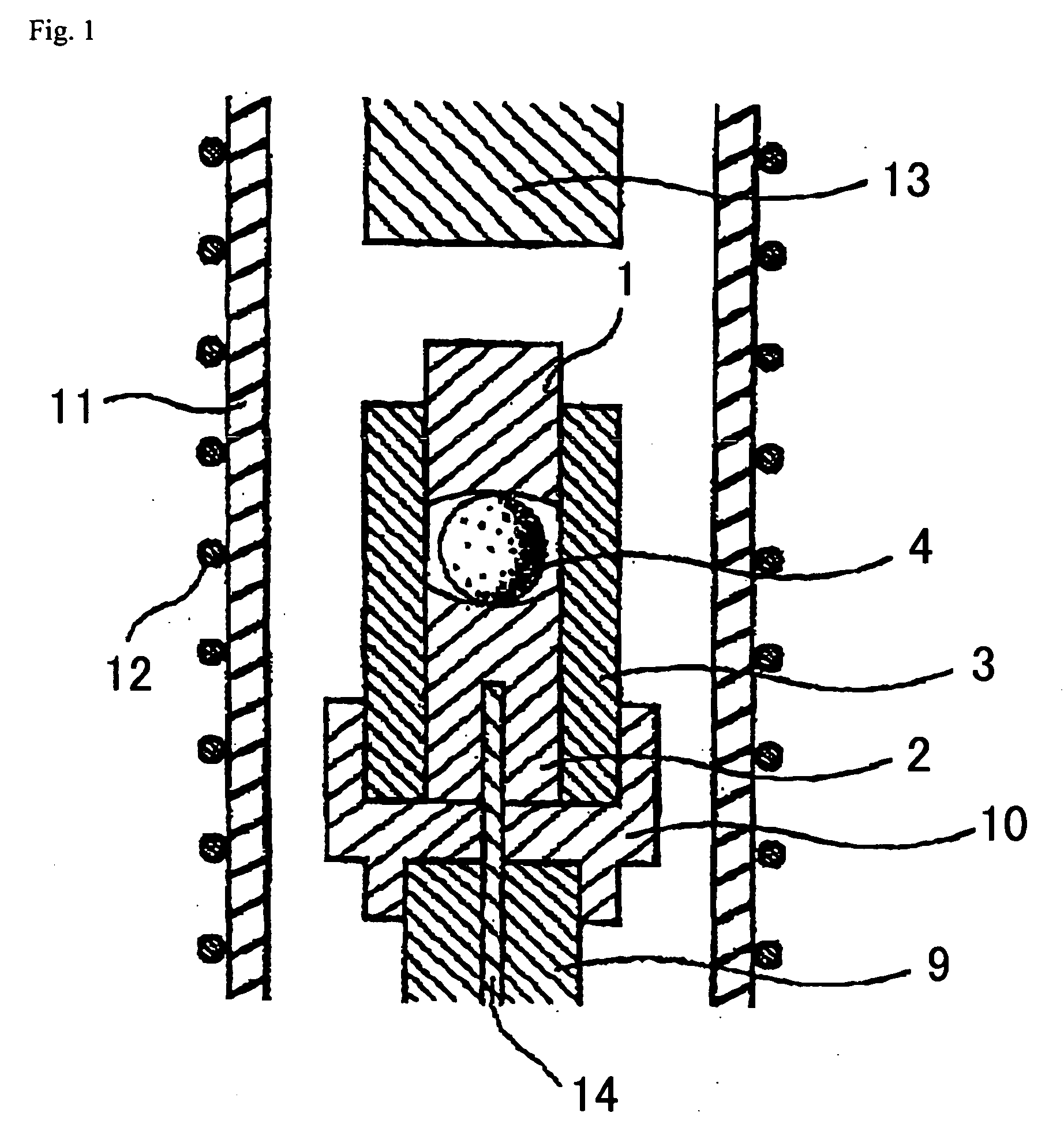Phosphate optical glass, preform for precision press molding and manufacturing method of the same, optical element and manufacturing method of the same
a technology of phosphate optical glass and manufacturing method, which is applied in the direction of glass tempering apparatus, glass making apparatus, manufacturing tools, etc., can solve the problems of inability to use precision press molding and poor weatherability of conventional low-dispersion glasses, and achieve good devitrification stability, good weatherability, and softening property
- Summary
- Abstract
- Description
- Claims
- Application Information
AI Technical Summary
Benefits of technology
Problems solved by technology
Method used
Image
Examples
examples 1 to 20
[0236] Table 1 gives the glass composition, refractive index (nd), Abbé number (νd), glass transition temperature (Tg), yield point (Ts), liquid phase temperature (L.T.), specific gravity, and haze value (a weatherability indicator) of each example. All of the glasses employed oxides, hydroxides, carbonates, and nitrates corresponding to the various components as starting materials. The starting materials were weighed out in such a manner as to yield the compositions listed in Table 1 following vitrification, adequately mixed, charged to a platinum crucible, melted in an electric furnace at a temperature range of 1,050 to 1,200° C., homogenized by stirring, clarified, and cast into a mold preheated to a suitable temperature. The cast glass was cooled to the glass transition temperature, immediately transferred to an annealing furnace, and gradually cooled to room temperature to obtain various phosphate optical glasses.
[0237] The refractive index (nd), Abbé number (νd), glass transi...
example 21
[0253] Next, glass melts corresponding to Examples 1 to 20 that had been clarified and homogenized were caused to flow at a prescribed flow rate out of a platinum alloy pipe the temperature of which had been adjusted to within a range permitting stable flow without devitrification of the glass. The outflowing glass melt was dripped down or drop-cut to separate glass melt gobs of the weight of the targeted preforms. The glass melt gobs were received in a receiving mold the bottom of which had gas spray outlets, and the glass melt gobs were formed into preforms for precision press molding while being floated by gas blown out through the gas spray outlets. The separation interval of the glass melt was adjusted to obtain spherical preforms 2 to 30 mm in diameter. The weight of the preforms precisely matched the settings and all surfaces thereof were smooth.
example 22
[0254] The preforms obtained in Example 21 were precision press molded in the apparatus shown in FIG. 1 to obtain aspherical lenses. Specifically, the preform was placed between lower mold 2 and upper mold 1 of a press mold, the interior of quartz tube 11 was backfilled with a nitrogen atmosphere, power was supplied to heater 12, and quartz tube 11 was heated. The temperature on the interior of the press mold was set so that the glass being molded exhibited a viscosity of 108 to 1010 dPa·s, and while maintaining this temperature, push rod 13 was lowered to push down upper mold 1, pressing the preform that had been set in the press mold. The pressing pressure of 8 MPa was applied for 30 seconds. Following pressing, the pressing pressure was removed and the press molded glass article was gradually cooled while still in contact with lower mold 2 and upper mold 1 to a temperature where the glass exhibited a viscosity of greater than or equal to 1012 dPa·s. Next, the molded glass article...
PUM
| Property | Measurement | Unit |
|---|---|---|
| Temperature | aaaaa | aaaaa |
| Temperature | aaaaa | aaaaa |
| Fraction | aaaaa | aaaaa |
Abstract
Description
Claims
Application Information
 Login to View More
Login to View More - R&D
- Intellectual Property
- Life Sciences
- Materials
- Tech Scout
- Unparalleled Data Quality
- Higher Quality Content
- 60% Fewer Hallucinations
Browse by: Latest US Patents, China's latest patents, Technical Efficacy Thesaurus, Application Domain, Technology Topic, Popular Technical Reports.
© 2025 PatSnap. All rights reserved.Legal|Privacy policy|Modern Slavery Act Transparency Statement|Sitemap|About US| Contact US: help@patsnap.com


